Plastic Pollution - Problem and Solutions
Plastic pollution is one of the most pressing environmental issues of our time, and it’s a problem that seems to be growing faster than we can manage it. Every year, millions of tons of plastic waste end up in our oceans, rivers, and landscapes, creating a toxic legacy that threatens wildlife, ecosystems, and even human health. But what exactly is plastic pollution, and why should we care? In this article, we will explore the sources of plastic waste, its devastating effects on marine life, and innovative solutions that can help us combat this crisis. By understanding the problem, we can take actionable steps towards reducing plastic pollution and promoting a cleaner, healthier planet.
At its core, plastic pollution refers to the accumulation of plastic products in the environment, which causes significant harm to wildlife and ecosystems. Plastics are synthetic materials that don’t biodegrade easily, meaning they can persist in the environment for hundreds, if not thousands, of years. This long lifespan, coupled with our increasing reliance on plastic products, has led to a staggering amount of waste. Did you know that it’s estimated that by 2050, there could be more plastic than fish in the oceans? Understanding the origins and consequences of plastic pollution is crucial for addressing this pervasive issue effectively.
Identifying the primary sources of plastic waste is essential for developing targeted strategies for reduction. Common sources include single-use plastics, industrial waste, and improper disposal practices. Here’s a closer look at some of the most significant contributors:
Single-use plastics are designed for one-time use, leading to massive waste generation. Items such as plastic bags, straws, and cutlery are convenient but often discarded after just a few minutes of use. Their convenience often overshadows their environmental impact, making them a major contributor to plastic pollution worldwide. It’s almost like using a beautiful, delicate flower as a paperweight—sure, it might look pretty for a moment, but it ultimately harms the environment.
Plastic bags and straws are ubiquitous in daily life, yet they pose severe environmental threats. Many cities and countries are now considering alternatives and bans to mitigate their usage. For instance, reusable bags and metal straws are becoming more popular, but the challenge lies in changing consumer habits. Just think about it: if every person replaced just one plastic bag a week with a reusable one, we could save billions of bags from entering landfills and oceans.
Packaging waste, particularly from food and consumer goods, constitutes a large portion of plastic pollution. The convenience of pre-packaged meals and products often leads to an overwhelming amount of plastic waste. Innovative packaging solutions, such as compostable materials and minimalistic packaging, along with recycling initiatives, are essential to address this growing concern. Imagine opening a package and finding not only your product but also a commitment to sustainability—now that’s a win-win!
Industries generate substantial plastic waste through manufacturing processes. From production scraps to packaging materials, the industrial sector is a significant contributor to plastic pollution. Implementing sustainable practices and waste management strategies can significantly reduce their environmental footprint. For example, companies can adopt circular economy principles, where waste is minimized, and materials are reused or recycled, creating a more sustainable business model.
Plastic pollution has devastating effects on marine ecosystems. Marine animals often ingest or become entangled in plastic debris, leading to injury, death, and disruption of the food chain. A single piece of plastic can have a ripple effect, impacting not just one species but an entire ecosystem. Imagine a sea turtle mistaking a plastic bag for a jellyfish—this tragic scenario is all too common and highlights the urgent need for action.
Microplastics, tiny plastic particles less than five millimeters in size, have infiltrated our oceans, posing risks to marine life and human health. These particles can originate from larger plastic items breaking down or from microbeads found in personal care products. Understanding their sources and effects is vital for developing effective mitigation strategies. It’s alarming to think that microplastics are now found in the most remote parts of the ocean, affecting even the most pristine environments.
Various species have been documented suffering from the impacts of plastic pollution. For example, seabirds often ingest plastic, mistaking it for food, which can lead to starvation or internal injuries. Case studies highlight the urgent need for conservation efforts and policy changes to protect vulnerable marine life. By shining a light on these affected species, we can foster a greater sense of responsibility and urgency in addressing plastic pollution.
Addressing plastic pollution requires innovative solutions, including recycling technologies, biodegradable alternatives, and community initiatives. Collaboration among governments, businesses, and individuals is essential to drive meaningful change. But what can we do to make a difference?
Advancements in recycling technologies offer promising solutions for managing plastic waste. These innovations can improve recycling rates and reduce the amount of plastic that ends up in landfills and oceans. For instance, new methods of chemical recycling can break down plastics into their original monomers, allowing them to be reused indefinitely. Imagine a world where plastic is not discarded but transformed—this is the future we can strive for!
Biodegradable materials present a sustainable alternative to conventional plastics. Exploring their potential and promoting their use can significantly reduce the environmental impact of plastic pollution. From plant-based packaging to compostable utensils, these alternatives can help us move towards a more sustainable future. It’s like swapping out a gas-guzzler for an electric car—both serve the same purpose, but one is far better for the environment.
Effective policy and regulation play a crucial role in combating plastic pollution. Governments must implement laws that promote waste reduction, recycling, and the use of sustainable materials to drive systemic change. Without strong policies in place, efforts to combat plastic pollution may falter.
Global initiatives, such as international agreements and campaigns, aim to address plastic pollution collectively. These efforts foster collaboration among nations to tackle this pressing environmental challenge. It’s like a team sport—when everyone plays their part, we can achieve remarkable results.
Local governments can implement policies that encourage recycling, reduce plastic usage, and promote community awareness. Local actions can have a significant impact on reducing plastic pollution at the grassroots level. Community clean-up events, educational programs, and incentives for sustainable practices can empower individuals to make a difference in their own neighborhoods.
- What is plastic pollution? Plastic pollution refers to the accumulation of plastic products in the environment, causing harm to wildlife and ecosystems.
- What are the main sources of plastic waste? The primary sources of plastic waste include single-use plastics, industrial waste, and improper disposal practices.
- How does plastic pollution affect marine life? Marine animals often ingest or become entangled in plastic debris, leading to injury, death, and disruption of the food chain.
- What innovative solutions are being developed to combat plastic pollution? Solutions include advancements in recycling technologies, biodegradable alternatives, and community initiatives.
- What role do policies play in addressing plastic pollution? Effective policies and regulations are crucial for promoting waste reduction, recycling, and the use of sustainable materials.
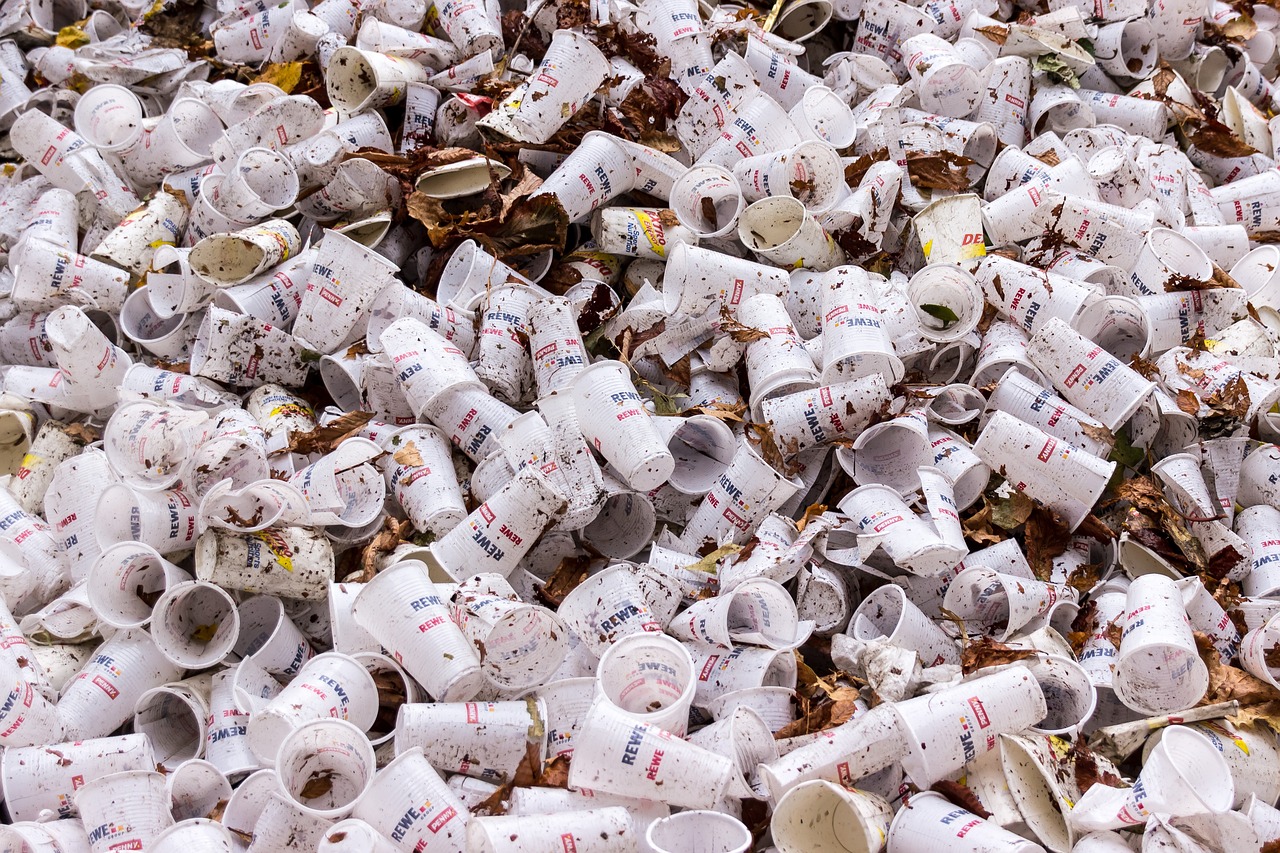
Understanding Plastic Pollution
Plastic pollution is not just a buzzword; it's a pressing environmental crisis that affects every corner of our planet. When we talk about plastic pollution, we're referring to the accumulation of plastic products in our environment, which ultimately leads to severe consequences for wildlife and ecosystems. It's like a toxic blanket that suffocates our natural world, and understanding its origins and consequences is crucial for addressing this pervasive issue effectively.
To grasp the full impact of plastic pollution, it’s essential to recognize its various forms. From the massive, visible pieces of plastic littering our beaches to the microscopic microplastics that infiltrate our oceans, plastic comes in many shapes and sizes. These materials can take hundreds, if not thousands, of years to decompose, leading to a long-lasting footprint that is detrimental to the earth.
The journey of plastic begins with its production, which has skyrocketed over the past few decades. In fact, global plastic production reached over 368 million metric tons in 2019, and this number continues to climb. This surge is largely due to the convenience and low cost associated with plastic products. However, this convenience comes at a steep price. When we discard plastic improperly, it doesn’t just vanish; it often ends up in our oceans, rivers, and landscapes, creating a hazardous environment for both wildlife and humans.
One of the most alarming aspects of plastic pollution is its impact on wildlife. Animals often mistake plastic debris for food, leading to ingestion that can cause severe health issues or even death. For instance, seabirds, turtles, and marine mammals are particularly vulnerable. The consequences of plastic ingestion can include starvation, malnutrition, and internal injuries. It’s a heartbreaking chain reaction that disrupts the entire ecosystem, affecting not just individual species but the intricate web of life that depends on them.
Let’s break down the types of plastic pollution into a few key categories:
- Macroplastics: These are large plastic items, such as bags, bottles, and fishing gear, that can be seen with the naked eye.
- Microplastics: Tiny plastic particles less than 5mm in size, often resulting from the breakdown of larger plastic items.
- Nanoplastics: Even smaller particles that can penetrate biological membranes, posing risks to human health and wildlife.
Understanding plastic pollution is the first step in combating it. By raising awareness of its origins, consequences, and the urgent need for change, we can begin to implement effective strategies to reduce its impact. Education plays a pivotal role in this process; when people understand the effects of their actions, they are more likely to make informed choices. Whether it’s opting for reusable bags, participating in local clean-up efforts, or advocating for policy changes, every action counts.
In conclusion, plastic pollution is a complex problem that requires a multifaceted approach. By understanding its origins and consequences, we can work towards innovative solutions that protect our planet and its inhabitants. Together, we can lift that toxic blanket of plastic and allow our ecosystems to breathe again.
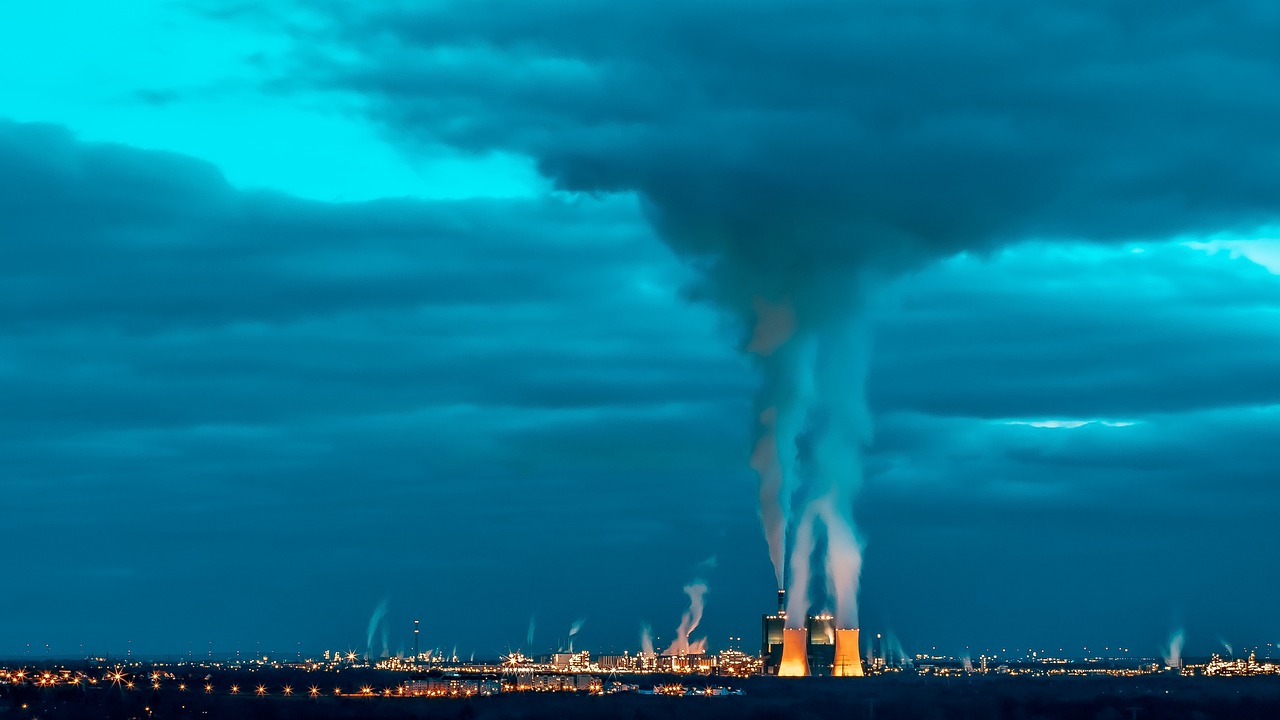
Sources of Plastic Waste
Identifying the primary sources of plastic waste is crucial for developing effective strategies to combat this pervasive environmental crisis. The world has become increasingly dependent on plastic, and as a result, we are witnessing an alarming increase in plastic waste. From our daily routines to industrial practices, plastic is woven into the fabric of modern life, often with devastating consequences for our planet.
One of the most significant contributors to plastic waste is single-use plastics. These are items designed to be used once and discarded, leading to massive amounts of waste that often end up in landfills and oceans. Think about it: every time you grab a plastic straw or a shopping bag, you're contributing to a growing mountain of plastic that takes centuries to decompose. The convenience of these products often overshadows their environmental impact, making it imperative that we rethink our consumption habits.
Another major source of plastic waste comes from packaging materials. The food and consumer goods industries rely heavily on plastic packaging to protect their products and extend shelf life. Unfortunately, this results in a significant amount of waste, as much of it is not recyclable. For instance, a typical household can generate a staggering amount of packaging waste each week, including wrappers, containers, and bags. According to recent studies, packaging waste accounts for nearly 40% of all plastic waste produced globally.
Moreover, industrial plastic waste is a substantial issue that often goes unnoticed. Many industries produce large quantities of plastic waste during manufacturing processes. This waste can include everything from off-cuts to defective products, which, if not managed properly, can lead to significant environmental harm. Implementing sustainable practices in these industries is not just beneficial; it’s necessary for reducing their overall environmental footprint.
To better illustrate the sources of plastic waste, consider the following table:
| Source | Description | Impact |
|---|---|---|
| Single-Use Plastics | Items designed for one-time use, such as straws and bags. | Contributes significantly to landfill and ocean pollution. |
| Packaging Waste | Plastic used for food and consumer goods packaging. | High volume of non-recyclable waste. |
| Industrial Waste | Plastic waste generated during manufacturing processes. | Environmental contamination if not managed properly. |
In addition to these primary sources, improper disposal practices also play a crucial role in exacerbating plastic pollution. Many people are unaware of the proper ways to dispose of plastics, leading to littering and illegal dumping. This not only harms local ecosystems but also contributes to larger environmental issues, such as microplastics entering our waterways. It's essential to raise awareness about the importance of recycling and proper waste management to mitigate these risks.
As we delve deeper into the issue of plastic pollution, it becomes clear that tackling this problem requires a multi-faceted approach. From reducing our reliance on single-use plastics to improving industrial practices and enhancing public awareness, every effort counts. The journey toward a plastic-free future is challenging, but with collective action, we can make significant strides in reducing plastic waste and protecting our environment.
- What are single-use plastics? Single-use plastics are items designed to be used once and then discarded, such as plastic bags, straws, and cutlery.
- How does plastic waste affect marine life? Marine animals often ingest plastic debris or become entangled in it, leading to injury or death, disrupting the food chain.
- What can individuals do to reduce plastic waste? Individuals can reduce plastic waste by using reusable bags, avoiding single-use plastics, and supporting recycling initiatives.
- Are there alternatives to plastic packaging? Yes, there are biodegradable materials and innovative packaging solutions that can reduce reliance on conventional plastics.
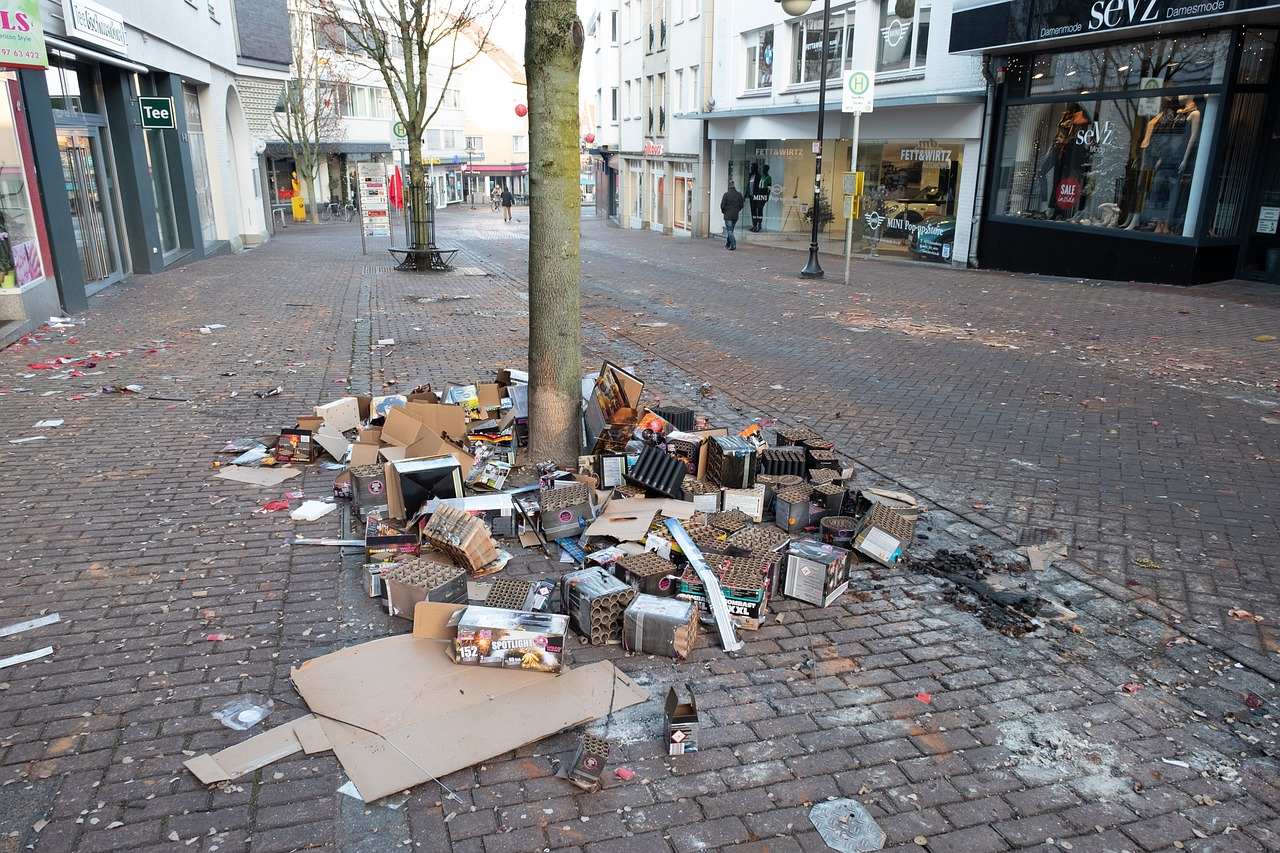
Single-Use Plastics
are those items designed to be used only once before being discarded. Think about that plastic fork you used at lunch or the coffee cup you tossed after your morning caffeine fix. While these items provide convenience, they come with a hefty environmental price tag. The sheer volume of single-use plastics produced globally is staggering, with millions of tons generated each year. This convenience often overshadows the long-term consequences, leading to a significant increase in plastic pollution.
The primary issue with single-use plastics is their disposability. Many of these items end up in landfills, oceans, and other natural habitats, where they can take hundreds of years to decompose. For instance, a plastic bag can take up to 1,000 years to break down, while a plastic straw can linger for over 200 years. This is akin to throwing away a piece of history that will never truly disappear. It’s not just about the time it takes to decompose; the breakdown process releases harmful chemicals into the environment, further exacerbating the problem.
Some of the most common single-use plastics include:
- Plastic bags
- Plastic straws
- Food containers
- Water bottles
- Cutlery
These items are often used for mere minutes but can have lasting impacts on our planet. For instance, plastic bags are notorious for polluting oceans and harming marine life. Sea turtles, for example, often mistake plastic bags for jellyfish, leading to severe health issues or even death. Similarly, plastic straws have been found lodged in the nostrils of sea turtles, causing injury and suffering. It’s clear that these seemingly harmless items can have devastating effects on wildlife.
Fortunately, there are growing movements to combat the prevalence of single-use plastics. Many cities and countries are implementing bans and restrictions on plastic bags and straws, encouraging the use of reusable alternatives. For instance, some places have introduced a small fee for plastic bags, prompting shoppers to bring their own reusable bags. This shift not only reduces waste but also promotes a culture of sustainability. It’s a step in the right direction, but there’s much more to be done.
The solution lies not just in banning these products but also in educating consumers about the impact of their choices. By raising awareness, we can inspire people to make more environmentally friendly decisions, such as opting for reusable containers, metal straws, and cloth bags. The journey to reduce single-use plastics is a collective effort that requires participation from every individual, business, and government.
In summary, single-use plastics may offer convenience, but their environmental impact is anything but trivial. As we continue to grapple with the reality of plastic pollution, it’s crucial to rethink our reliance on these products. By making conscious choices and advocating for sustainable practices, we can contribute to a healthier planet for future generations.
Q: What are single-use plastics?
A: Single-use plastics are items designed to be used once and then discarded, such as plastic bags, straws, and cutlery.
Q: Why are single-use plastics a problem?
A: They contribute significantly to plastic pollution, harming wildlife and ecosystems, and can take hundreds of years to decompose.
Q: What can I do to reduce my use of single-use plastics?
A: You can opt for reusable alternatives, such as cloth bags, metal straws, and glass containers, and support local initiatives aimed at reducing plastic waste.

Plastic Bags and Straws
Plastic bags and straws are two of the most recognizable culprits in the battle against plastic pollution. They are so deeply embedded in our daily lives that we often overlook their environmental impact. These items, designed for convenience, typically end up in landfills, oceans, and other ecosystems, contributing significantly to the global plastic crisis. In fact, it’s estimated that over 1 trillion plastic bags are used each year worldwide. That’s a staggering number, and it highlights just how much we rely on these single-use products.
One of the most concerning aspects of plastic bags and straws is their longevity in the environment. While they might be used for mere minutes, they can take hundreds of years to decompose. This means that each bag or straw we discard can persist long after we’ve forgotten about it. As they break down, they fragment into smaller pieces, contributing to the growing problem of microplastics that infiltrate our ecosystems.
Fortunately, many communities are recognizing the need for change. Various cities and countries have begun implementing bans or restrictions on plastic bags and straws, encouraging the use of alternatives. Some popular alternatives include:
- Reusable Bags: Made from durable materials, these bags can be used multiple times, significantly reducing waste.
- Metal or Bamboo Straws: These eco-friendly options can replace single-use plastic straws, offering a sustainable choice for sipping.
- Compostable Straws: Made from plant materials, these straws break down more quickly than traditional plastics.
Moreover, businesses are also stepping up to the plate. Many restaurants and cafes are now offering incentives for customers who bring their own reusable bags or straws. This not only promotes sustainable practices but also raises awareness about the importance of reducing plastic waste. As consumers, we have the power to drive change through our choices. By opting for alternatives, we can send a clear message that we care about our planet.
In conclusion, while plastic bags and straws may seem harmless, their environmental impact is anything but. By understanding their role in plastic pollution and actively seeking alternatives, we can contribute to a healthier planet. It's time to rethink our habits and make conscious choices that benefit the environment.
Q: What are the main environmental impacts of plastic bags and straws?
A: Plastic bags and straws contribute to pollution in oceans and landfills, harm wildlife, and take hundreds of years to decompose, leading to long-term environmental issues.
Q: Are there any alternatives to plastic bags and straws?
A: Yes! Reusable bags, metal or bamboo straws, and compostable straws are excellent alternatives that can significantly reduce plastic waste.
Q: How can I help reduce plastic pollution in my community?
A: You can participate in local clean-up events, advocate for bans on single-use plastics, and encourage friends and family to use reusable alternatives.

Packaging Waste
Packaging waste is one of the most significant contributors to plastic pollution, accounting for a staggering percentage of the plastic that ends up in our landfills and oceans. Every time we purchase a product, we often find ourselves inundated with layers of plastic wrapping, boxes, and containers, all designed to protect and present the item. However, this convenience comes at a steep environmental cost. In fact, according to recent studies, over 40% of plastic produced globally is used for packaging, and a large portion of that is single-use, meaning it is discarded almost immediately after use.
Consider a typical online shopping experience: you order a simple gadget, and it arrives encased in multiple layers of plastic bubble wrap, cardboard, and sometimes even additional plastic bags. While this packaging serves its purpose of safeguarding the product during transit, it raises a critical question: Is the environmental impact worth the convenience? Unfortunately, the answer is often a resounding no. The majority of this packaging ends up in landfills, where it can take hundreds of years to decompose, leaching harmful chemicals into the soil and waterways in the process.
To tackle the issue of packaging waste, innovative solutions are being explored across various industries. For instance, companies are increasingly turning to eco-friendly packaging materials that are biodegradable or made from recycled content. Here are a few notable alternatives:
- Plant-Based Plastics: Made from renewable resources, these plastics break down more easily than traditional petroleum-based plastics.
- Reusable Packaging: Some businesses are adopting a model where packaging is returned and reused, significantly cutting down on waste.
- Minimalist Packaging: Brands are redesigning their packaging to use less material while still ensuring product safety.
Additionally, consumer awareness plays a pivotal role in reducing packaging waste. By making informed choices—such as opting for products with minimal packaging or supporting companies that prioritize sustainability—individuals can contribute to a larger movement towards reducing plastic pollution. Every small change counts!
However, the responsibility doesn't solely lie with consumers. Governments and regulatory bodies must step in to enforce policies that encourage sustainable packaging practices. This could include incentives for companies that utilize eco-friendly materials or penalties for those that fail to reduce their plastic footprint. It's a collective effort that requires collaboration among all stakeholders—from manufacturers to consumers—to create a lasting impact.
In conclusion, packaging waste is a multifaceted issue that requires immediate attention. By understanding its implications and supporting innovative solutions, we can all play a part in mitigating the effects of plastic pollution. The journey towards a sustainable future begins with our choices today. Let's make them count!
- What is packaging waste?
Packaging waste refers to the materials used to wrap or protect goods, which often includes plastics that are discarded after a single use. - How can I reduce packaging waste in my daily life?
Opt for products with minimal packaging, bring your own bags when shopping, and choose reusable containers whenever possible. - What are some alternatives to traditional plastic packaging?
Some alternatives include biodegradable plastics, reusable packaging systems, and minimalist designs that use less material. - Why is it important to address packaging waste?
Addressing packaging waste is crucial for reducing plastic pollution, protecting wildlife, and preserving our planet's ecosystems.

Industrial Plastic Waste
Industrial plastic waste is a significant contributor to the overall plastic pollution crisis we face today. As industries ramp up production to meet global demands, the volume of plastic waste generated through manufacturing processes continues to grow. This waste often stems from the production of goods ranging from electronics to automotive parts, and even packaging materials. The sheer scale of this waste can be staggering; for instance, the plastic waste generated by the manufacturing sector alone can reach millions of tons annually. Understanding the sources and impacts of this waste is crucial for developing effective strategies to mitigate its effects on the environment.
One of the major challenges with industrial plastic waste is its **disposal**. Many companies still rely on traditional waste management practices, which often involve landfilling or incineration. This not only contributes to the depletion of our natural resources but also increases greenhouse gas emissions. To combat this, industries must adopt more sustainable practices. This could include implementing comprehensive recycling programs, investing in cleaner technologies, and exploring alternative materials that are less harmful to the environment.
Moreover, companies can benefit from conducting regular audits of their plastic usage and waste generation. By identifying key areas where plastic can be reduced or eliminated, industries can significantly lower their environmental footprint. For example, a manufacturing plant might discover that a large portion of its plastic waste comes from packaging materials. By switching to biodegradable or recyclable packaging, the plant can not only reduce waste but also enhance its brand image as a sustainable business.
In addition to internal changes, collaboration among industries is essential. By sharing best practices and innovative solutions, companies can collectively tackle the issue of plastic waste. For instance, forming alliances to develop new recycling technologies or creating industry-wide standards for sustainable materials can lead to more significant changes. The table below illustrates some promising strategies that industries can adopt to minimize their plastic waste:
| Strategy | Description |
|---|---|
| Waste Audits | Regular assessments to identify sources of plastic waste and opportunities for reduction. |
| Recycling Programs | Implementing systems to recycle plastic waste generated during production processes. |
| Alternative Materials | Exploring biodegradable or sustainable alternatives to traditional plastics. |
| Industry Collaboration | Working together with other companies to share resources and develop joint initiatives. |
In conclusion, addressing industrial plastic waste is not just the responsibility of manufacturers but requires a **collective effort** from all stakeholders involved. By embracing innovative practices and fostering a culture of sustainability, industries can play a pivotal role in reducing plastic pollution and protecting our planet for future generations. The road ahead may be challenging, but the rewards of a cleaner, healthier environment are well worth the effort.
- What is industrial plastic waste? Industrial plastic waste refers to the plastic materials discarded during the manufacturing processes in various industries.
- How does industrial plastic waste impact the environment? It contributes to pollution, harms wildlife, and can lead to significant ecological damage if not managed properly.
- What can industries do to reduce plastic waste? Industries can conduct waste audits, implement recycling programs, explore alternative materials, and collaborate with other companies.
- Are there regulations regarding industrial plastic waste? Yes, many countries have regulations that require industries to manage their waste responsibly and reduce plastic usage.
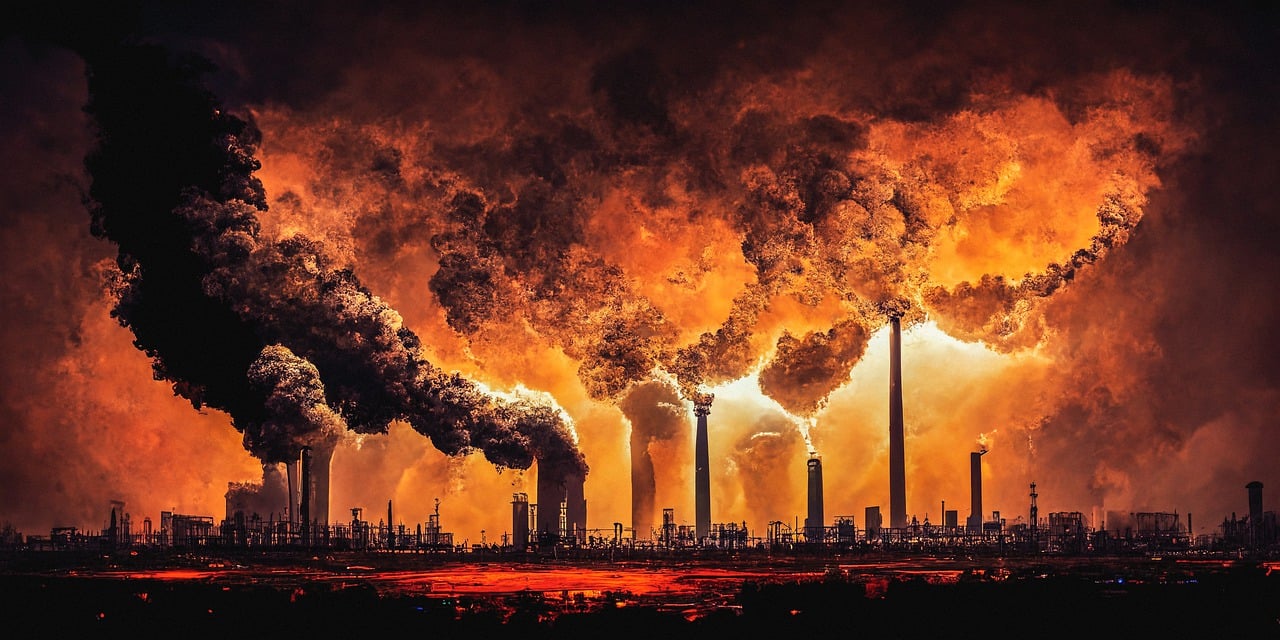
Impact on Marine Life
The impact of plastic pollution on marine life is nothing short of catastrophic. Imagine a vast ocean, teeming with vibrant life, suddenly choked by an unseen enemy—plastic. This pollution not only harms individual species but also disrupts entire ecosystems. Marine animals, from the smallest plankton to the largest whales, are increasingly falling victim to plastic debris. They often mistake plastic for food, leading to ingestion that can be fatal. In fact, studies have shown that a staggering over 800 species are affected by marine debris, and this number continues to rise.
One of the most alarming aspects of plastic pollution is the presence of microplastics. These tiny particles, less than 5mm in size, have infiltrated every corner of our oceans. They are so small that they can easily be ingested by marine organisms, including fish and shellfish, which are then consumed by larger predators, including humans. This bioaccumulation poses serious health risks not only to marine life but also to humans who rely on seafood as a significant part of their diet.
Consider the plight of sea turtles, for instance. They often mistake plastic bags for jellyfish, their favorite food. The consequences can be dire: a turtle that ingests plastic may suffer from internal injuries, malnutrition, or even death. Similarly, seabirds, such as albatrosses, are known to feed their chicks plastic pieces, believing they are providing nourishment. This tragic cycle illustrates the far-reaching effects of our plastic waste.
Furthermore, the disruption of the food chain caused by plastic pollution can have ripple effects throughout the marine ecosystem. When certain species decline due to ingestion of plastic, it can lead to overpopulation of other species, throwing the entire ecosystem out of balance. This phenomenon is akin to pulling a thread from a finely woven tapestry; the entire fabric begins to unravel.
To better understand the impact of plastic pollution on marine life, here’s a table that highlights some affected species and the specific ways they are impacted:
| Species | Impact of Plastic Pollution |
|---|---|
| Sea Turtles | Ingestion of plastic bags mistaken for jellyfish, leading to digestive blockages. |
| Seabirds | Feeding plastic to chicks, resulting in malnutrition and death. |
| Fish | Ingestion of microplastics, leading to health issues and potential human consumption risks. |
| Marine Mammals | Entanglement in plastic debris, causing injury or drowning. |
It's clear that the effects of plastic pollution are profound and far-reaching. As we continue to grapple with this issue, it becomes increasingly important to raise awareness and promote conservation efforts. Understanding the impact on marine life is just the first step; we must take action to protect these vulnerable species and their habitats.
Q: What are microplastics and why are they a concern?
A: Microplastics are tiny plastic particles that result from the breakdown of larger plastic debris. They are a concern because they can be ingested by marine life, leading to health issues and entering the food chain.
Q: How does plastic pollution affect the food chain in oceans?
A: Plastic pollution disrupts the food chain by harming species at various levels. When predators consume contaminated prey, toxins can accumulate and affect their health and reproductive success.
Q: What can individuals do to help reduce plastic pollution?
A: Individuals can reduce plastic pollution by minimizing the use of single-use plastics, participating in beach clean-ups, and advocating for policies that promote recycling and sustainability.

Microplastics in Oceans
Microplastics are tiny plastic particles, typically less than 5 millimeters in size, that have become a significant environmental concern, especially in our oceans. These minuscule bits of plastic originate from a variety of sources, including the breakdown of larger plastic items, synthetic fibers from clothing, and even microbeads found in personal care products. As they are washed into waterways, they ultimately make their way into the vast oceans, creating a silent but deadly threat to marine life.
The presence of microplastics in oceans raises alarming questions about their impact on marine ecosystems and human health. Marine animals, such as fish, turtles, and seabirds, often mistake these particles for food, leading to ingestion. This ingestion can cause physical harm, such as blockages in the digestive system, and can even be fatal. Furthermore, microplastics can absorb harmful chemicals from the surrounding water, which then enter the food chain when these animals are consumed by larger predators, including humans. In fact, studies have shown that microplastics have been found in various seafood items, raising concerns about the potential health risks for consumers.
To understand the scope of this issue, consider the following statistics:
| Source of Microplastics | Percentage Contribution |
|---|---|
| Breakdown of Larger Plastics | 40% |
| Synthetic Fibers | 35% |
| Microbeads from Cosmetics | 25% |
As we delve deeper into the issue, it’s essential to recognize that addressing microplastic pollution requires a multifaceted approach. This includes:
- Raising public awareness about the sources and impacts of microplastics.
- Encouraging the use of natural fibers in clothing and banning microbeads in cosmetics.
- Implementing better waste management practices to prevent plastic waste from entering waterways.
In conclusion, microplastics in our oceans are not just an environmental issue; they pose a threat to the health of marine life and potentially to humans as well. The urgency to combat this crisis cannot be overstated. By understanding the sources, impacts, and potential solutions, we can take significant steps toward reducing microplastic pollution and protecting our oceans for future generations.
- What are microplastics? Microplastics are small plastic particles less than 5mm in size that originate from larger plastic debris or are manufactured as small particles.
- How do microplastics affect marine life? Marine animals ingest microplastics, leading to physical harm, toxic exposure, and disruptions in the food chain.
- Can microplastics be removed from oceans? While some technologies are being developed to remove microplastics, prevention through reducing plastic usage is the most effective strategy.
- What can individuals do to help reduce microplastics? Individuals can reduce their plastic consumption, choose natural fiber clothing, and avoid products containing microbeads.
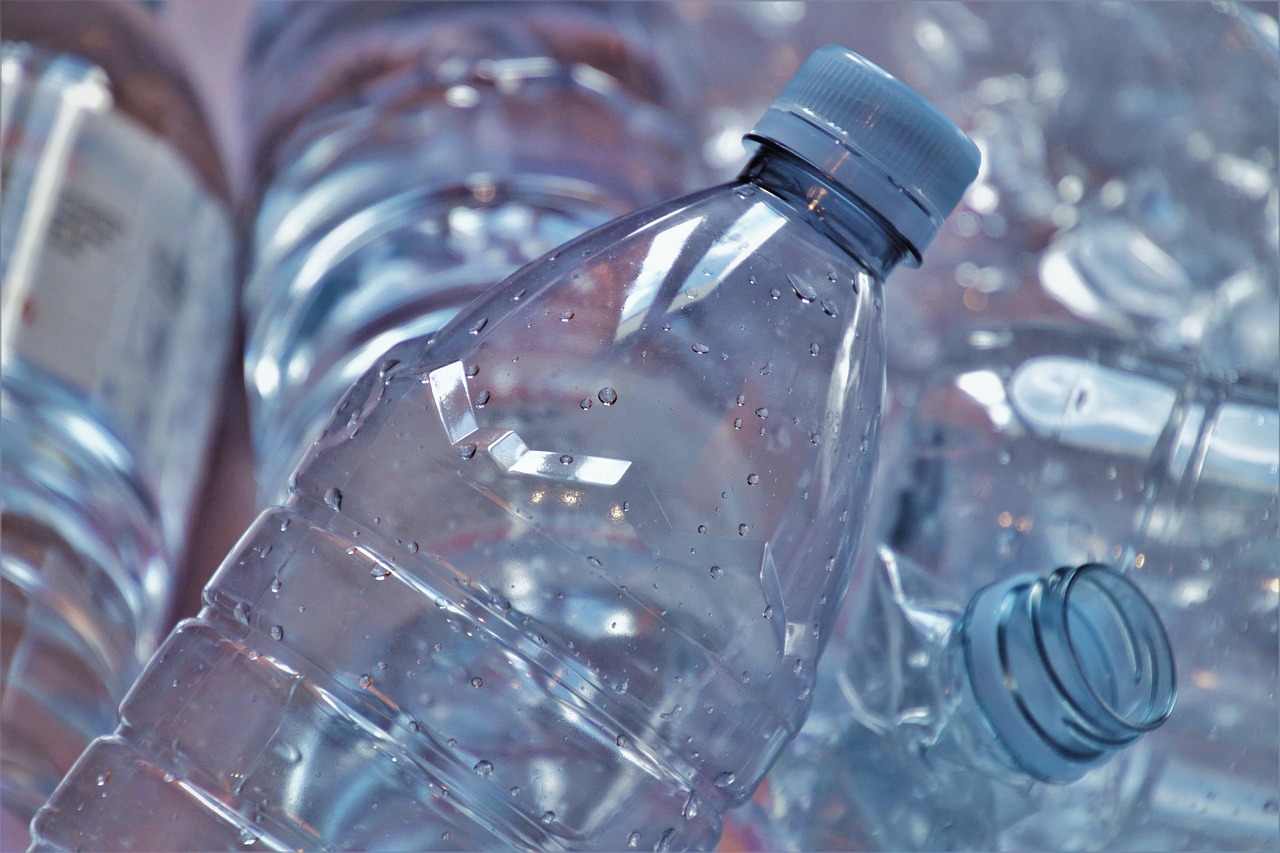
Case Studies of Affected Species
The impact of plastic pollution on marine life is both profound and alarming. Numerous species have been documented suffering from the consequences of plastic debris in their habitats. For instance, sea turtles often mistake plastic bags for jellyfish, a primary food source. This confusion can lead to severe digestive issues, malnutrition, and even death. One study found that over 50% of sea turtles had ingested plastic at some point in their lives, highlighting the urgent need for action.
Another group severely affected by plastic pollution is marine birds. Species such as the albatross are known to ingest plastic debris, which can accumulate in their stomachs, leading to starvation. In fact, a staggering 90% of seabirds are estimated to have plastic in their stomachs. This not only affects their health but also disrupts the entire ecosystem, as these birds play a crucial role in controlling fish populations.
Furthermore, marine mammals like seals and whales are often entangled in discarded fishing nets and plastic ropes. This entanglement can cause serious injuries or even drownings. A notable case involved a humpback whale found off the coast of California, which had over 100 feet of fishing line wrapped around its body. Such incidents underscore the urgent need for better waste management practices and the implementation of stricter regulations on plastic usage.
The issue is not limited to larger species. Microplastics have infiltrated the food chain, affecting even the smallest marine organisms. For example, studies have shown that zooplankton, which are vital to the marine food web, are consuming microplastics, potentially leading to toxic effects that ripple through the ecosystem. This phenomenon raises serious questions about the safety of seafood for human consumption, as these toxins can accumulate in larger fish.
| Species | Impact of Plastic Pollution | Case Study Example |
|---|---|---|
| Sea Turtles | Ingestion of plastic bags mistaken for food | Over 50% of sea turtles have ingested plastic |
| Seabirds (e.g., Albatross) | Ingestion of plastic leading to starvation | 90% of seabirds estimated to have plastic in their stomachs |
| Marine Mammals (e.g., Whales) | Entanglement in fishing nets | Humpback whale found with 100 feet of fishing line |
| Zooplankton | Consumption of microplastics | Microplastics found in zooplankton affecting food chain |
These case studies illustrate the critical need for conservation efforts and policy changes to protect vulnerable marine life from the devastating impacts of plastic pollution. As we continue to learn about the extent of this crisis, it becomes increasingly clear that collaborative action is essential. By raising awareness and implementing effective strategies, we can help safeguard our oceans and the myriad of species that call them home.
- What are microplastics? Microplastics are tiny plastic particles less than 5mm in size, often resulting from the breakdown of larger plastic items.
- How does plastic pollution affect human health? Consuming seafood contaminated with microplastics can pose health risks, including exposure to toxic chemicals.
- What can individuals do to reduce plastic pollution? Individuals can reduce plastic use by opting for reusable bags, bottles, and containers, and by supporting policies aimed at reducing plastic waste.
- Are there any successful initiatives to combat plastic pollution? Yes, various global initiatives and local government actions have been implemented to promote recycling, reduce plastic usage, and raise awareness about the issue.
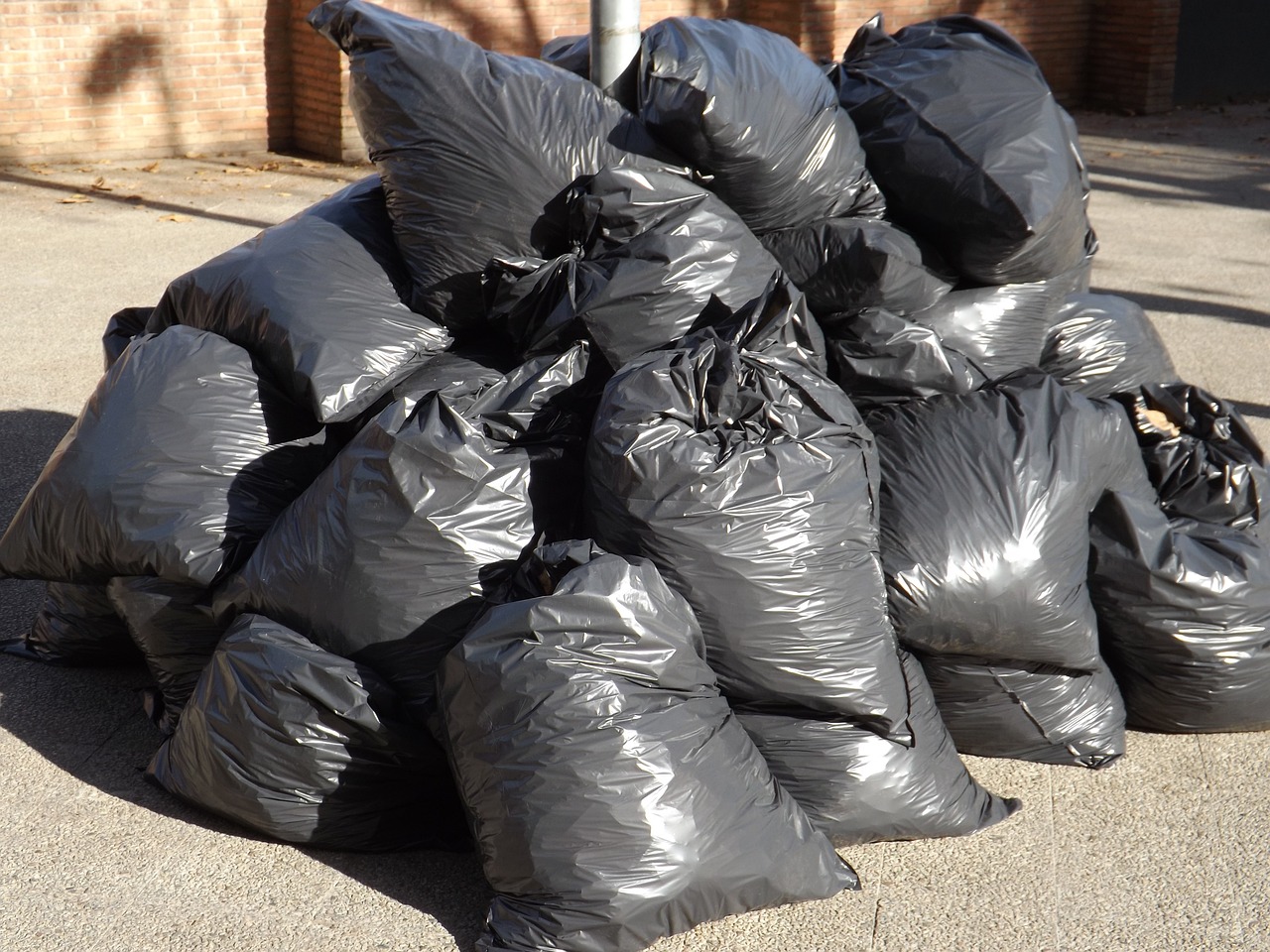
Innovative Solutions
Addressing the colossal challenge of plastic pollution demands that can adapt to our ever-evolving world. This isn’t just about cleaning up; it’s about rethinking how we produce, consume, and dispose of plastics. One of the most promising avenues involves advancements in recycling technologies. These technologies not only enhance the efficiency of recycling processes but also help in converting more types of plastic waste into reusable materials. Imagine a world where the plastic bottle you just tossed could be transformed back into a brand-new bottle, reducing the need for virgin materials!
Moreover, the emergence of biodegradable alternatives is a game-changer. These materials are designed to break down more naturally in the environment, significantly lessening the long-lasting impact that traditional plastics have. For instance, some companies are now creating bags and packaging from plant-based materials that decompose within months instead of centuries. This shift could drastically reduce the amount of plastic waste that ends up in landfills and oceans.
Community initiatives also play a vital role in combating plastic pollution. Local groups are organizing clean-up drives, educational workshops, and awareness campaigns that inspire individuals to take action. When communities come together, they can foster a culture of sustainability that encourages responsible consumption and waste management. For example, a neighborhood might set up a recycling program that not only reduces waste but also educates residents on the importance of reducing plastic use.
| Innovative Solutions | Description |
|---|---|
| Recycling Technologies | Advanced methods that improve recycling rates and convert plastic waste into reusable materials. |
| Biodegradable Materials | Plant-based alternatives designed to break down naturally, reducing long-term environmental impact. |
| Community Initiatives | Local efforts aimed at cleaning up plastic waste and raising awareness about sustainable practices. |
Collaboration is crucial in this fight against plastic pollution. Governments, businesses, and individuals must work together to implement these innovative solutions. For instance, businesses can partner with local governments to establish recycling programs, while individuals can support companies that prioritize sustainability. By fostering a collective responsibility, we can create a ripple effect that leads to significant change.
- What are the most effective ways to reduce plastic pollution?
Reducing plastic pollution can be achieved through various methods, including minimizing single-use plastics, recycling, and supporting biodegradable alternatives. - How can individuals contribute to combating plastic pollution?
Individuals can contribute by reducing plastic use, participating in community clean-ups, and advocating for sustainable practices in their communities. - Are biodegradable plastics a complete solution?
While biodegradable plastics are a step in the right direction, they are not a complete solution. It is essential to reduce overall plastic consumption and improve recycling practices.
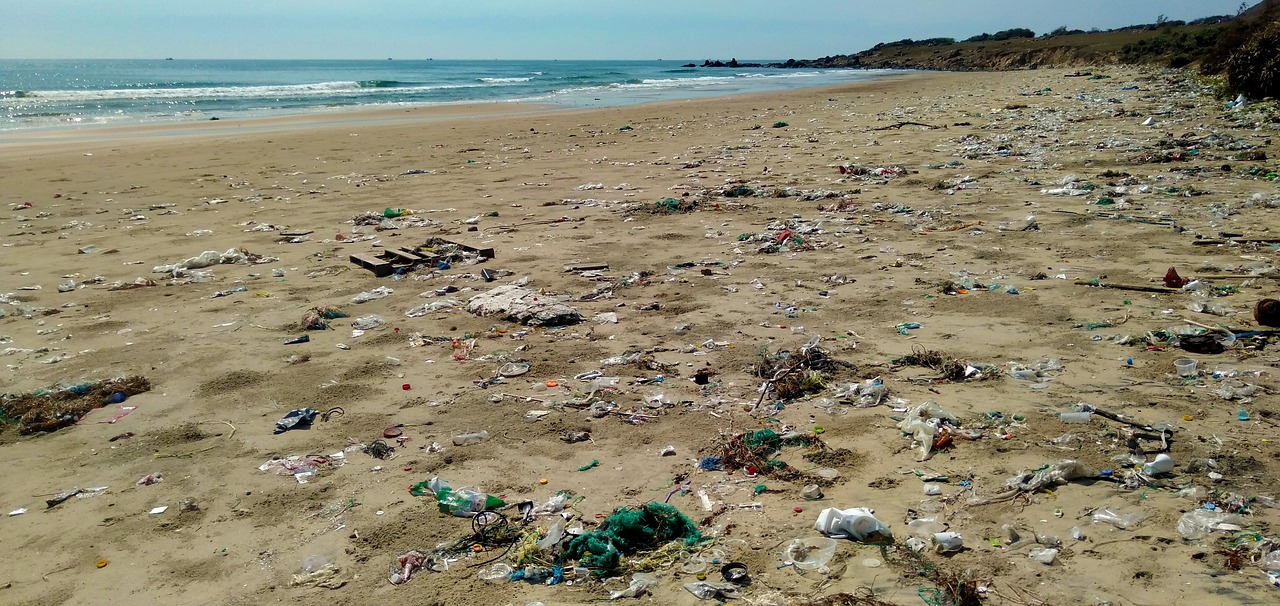
Recycling Technologies
Recycling technologies are at the forefront of our battle against plastic pollution, acting as a beacon of hope in a world overwhelmed by waste. These innovative solutions are not just about reprocessing materials; they represent a profound shift in how we perceive and manage plastic. Imagine a world where discarded plastics are transformed into valuable resources instead of ending up in landfills or oceans. This vision is becoming a reality thanks to advancements in recycling technologies.
One of the most promising developments in this field is the emergence of chemical recycling. Unlike traditional mechanical recycling, which often degrades the quality of plastic with each cycle, chemical recycling breaks down plastics into their original monomers. This process allows for the creation of new plastics that are virtually identical to virgin materials. It's akin to taking a puzzle apart and reassembling it perfectly, ensuring that the end product maintains its integrity and usability. As a result, we can significantly reduce the demand for new plastic production, which is a major contributor to environmental degradation.
Another noteworthy innovation is the advent of automated sorting technologies. These systems utilize advanced AI and robotics to identify and separate different types of plastics with incredible precision. By streamlining the sorting process, we can enhance the efficiency of recycling facilities and increase the overall recycling rates. Imagine a factory floor where machines work tirelessly, sorting through mountains of plastic waste as if they were performing a choreographed dance—this is the future we are heading towards. With better sorting, we can ensure that more plastics are recycled properly, minimizing contamination and maximizing recovery.
Furthermore, the integration of biotechnology into recycling processes is opening up new avenues for plastic waste management. Scientists are exploring the use of enzymes and microorganisms that can digest plastics, breaking them down into harmless byproducts. This biological approach offers a sustainable solution, as it can potentially reduce the energy consumption associated with traditional recycling methods. Picture tiny organisms working diligently to clean up our planet—this is not just science fiction; it's a burgeoning reality.
However, it’s essential to recognize that while these technologies hold great promise, they are not a cure-all. The effectiveness of recycling technologies largely depends on the cooperation of consumers and businesses alike. To truly tackle plastic pollution, we must embrace a culture of recycling, where individuals are informed about proper disposal methods, and companies are incentivized to design products with recyclability in mind. In this way, recycling technologies can thrive, creating a robust circular economy that benefits both the environment and society.
- What is chemical recycling? Chemical recycling is a process that breaks down plastics into their original monomers, allowing for the production of new plastics that are similar in quality to virgin materials.
- How does automated sorting work? Automated sorting uses AI and robotics to identify and separate different types of plastics, improving the efficiency of recycling facilities.
- Can biotechnology help in recycling plastics? Yes, researchers are exploring the use of enzymes and microorganisms that can digest plastics, offering a sustainable solution for plastic waste management.
- What role do consumers play in recycling? Consumers play a crucial role by properly disposing of plastics and supporting products designed for recyclability, which enhances the effectiveness of recycling technologies.

Biodegradable Alternatives
As the world grapples with the overwhelming challenge of plastic pollution, are emerging as a beacon of hope. These materials, designed to break down naturally over time, offer a sustainable solution to the plastic crisis that has engulfed our environment. Imagine a world where your plastic bag could decompose in a matter of months instead of persisting for hundreds of years! This transition is not just a dream; it's becoming a reality.
Biodegradable alternatives come in various forms, including plant-based plastics, compostable materials, and other innovative substances derived from natural sources. For instance, polylactic acid (PLA) is a popular biodegradable plastic made from fermented plant starch, often sourced from corn or sugarcane. This type of plastic can be used in everything from food packaging to disposable cutlery, providing a more environmentally friendly option compared to traditional petroleum-based plastics.
Another noteworthy alternative is compostable bioplastics, which not only decompose but also enrich the soil when they break down. This dual benefit makes them an attractive option for businesses looking to reduce their environmental footprint. However, it's crucial to note that these materials require specific conditions to decompose effectively, often found in industrial composting facilities. This highlights the importance of proper waste management systems to ensure these alternatives fulfill their promise.
In addition to these materials, there are also natural fibers like jute, hemp, and bamboo, which can replace plastic in various applications. These fibers are not only biodegradable but also renewable, making them an excellent choice for sustainable packaging and products. For example, jute bags are gaining popularity as a fashionable and eco-friendly alternative to plastic shopping bags, showcasing how style and sustainability can go hand in hand.
However, the transition to biodegradable alternatives is not without its challenges. The production of these materials can sometimes be resource-intensive, and if not managed correctly, they can still contribute to environmental issues. Therefore, it is essential for consumers, businesses, and policymakers to work together to create a supportive ecosystem that encourages the adoption of these sustainable options.
To summarize, biodegradable alternatives present a promising path forward in the fight against plastic pollution. By embracing these materials, we can significantly reduce our reliance on single-use plastics and move toward a more sustainable future. The shift requires collective effort and commitment, but the potential benefits for our planet are immense.
- What are biodegradable plastics made from? Biodegradable plastics are typically made from natural materials such as corn starch, sugarcane, or other renewable resources.
- How long does it take for biodegradable materials to decompose? The decomposition time can vary widely, ranging from a few months to several years, depending on the material and environmental conditions.
- Are biodegradable plastics better for the environment? While they are generally better than traditional plastics, biodegradable plastics still require proper disposal methods to ensure they break down effectively.
- Can biodegradable plastics be recycled? Many biodegradable plastics cannot be recycled with traditional plastics, so it's important to check local recycling guidelines.
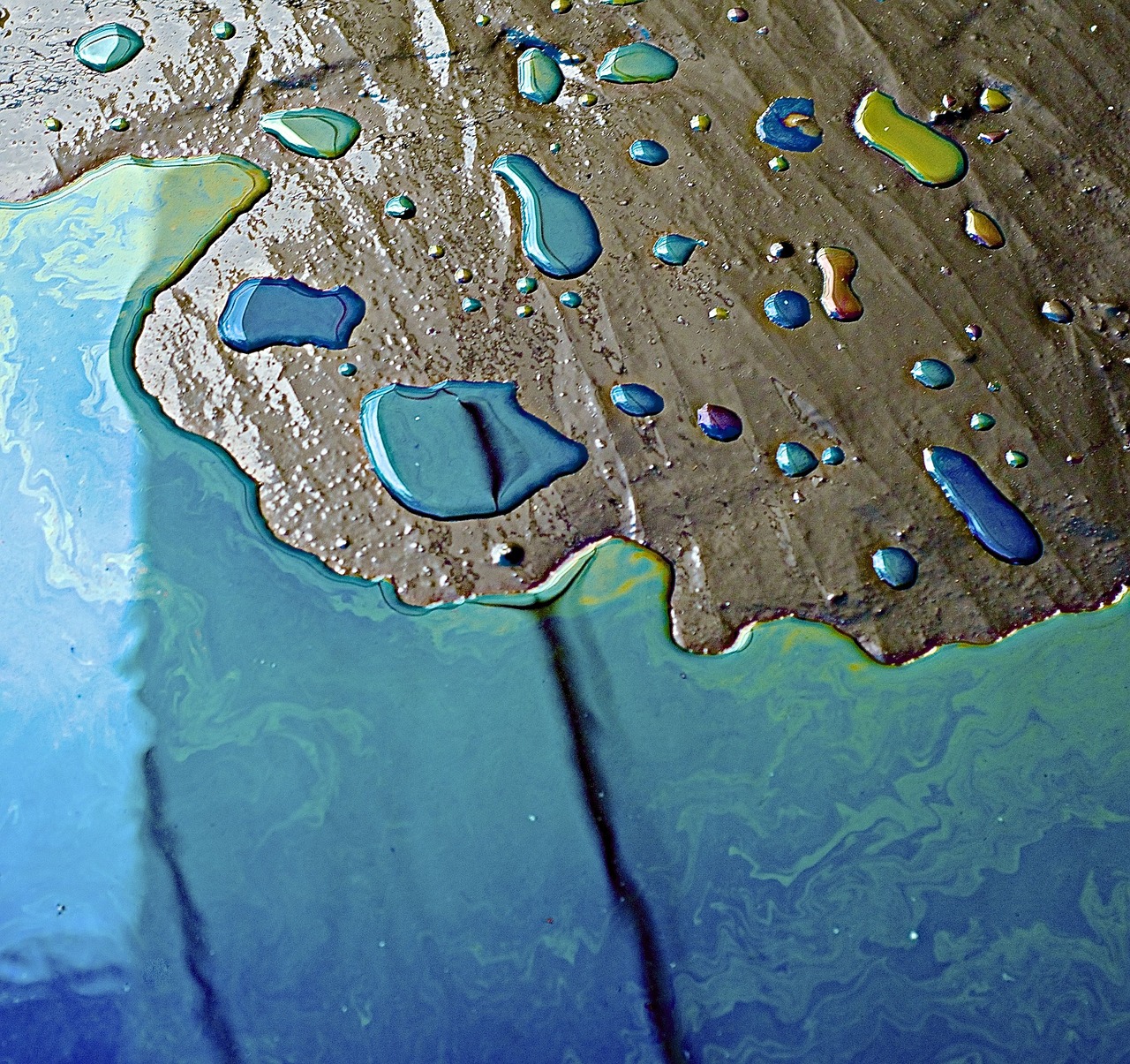
Policy and Regulation
Effective policy and regulation play a crucial role in combating plastic pollution. Without a robust framework of laws and guidelines, the battle against plastic waste becomes a daunting challenge. Governments around the world must step up and take decisive action to implement regulations that not only promote waste reduction but also encourage recycling and the use of sustainable materials.
One of the most effective strategies involves creating incentives for businesses to reduce plastic usage. By providing tax breaks or grants for companies that adopt eco-friendly practices, governments can stimulate a shift towards more sustainable operations. This not only helps the environment but also encourages innovation in the development of biodegradable alternatives. For example, some countries have seen a surge in the production of plant-based packaging materials as a direct result of such policies.
Moreover, international collaboration is essential in tackling plastic pollution on a global scale. Initiatives like the United Nations Environment Programme (UNEP) have been pivotal in fostering agreements among nations to collectively address this pressing issue. These agreements often set ambitious targets for reducing plastic waste and promote sharing of best practices among countries. For instance, the Basel Convention has been instrumental in regulating the transboundary movements of plastic waste, ensuring that countries manage their plastic waste responsibly.
At the local level, governments can implement specific policies that directly impact communities. For example, many cities have introduced plastic bag bans or levies on single-use plastics, which have led to significant reductions in plastic waste. These grassroots initiatives not only engage the community but also raise awareness about the importance of reducing plastic consumption. Public education campaigns, along with community clean-up events, can further enhance these efforts by fostering a sense of responsibility among citizens.
To illustrate the impact of different policies on plastic pollution, consider the following table that compares various countries and their approaches:
| Country | Policy Type | Impact |
|---|---|---|
| Germany | Deposit Return Scheme | High recycling rates (over 90%) |
| Kenya | Plastic Bag Ban | Significant reduction in plastic waste |
| Canada | Single-Use Plastics Ban | Targeted reduction of plastic pollution |
In summary, the fight against plastic pollution is not just a matter of individual responsibility; it requires strong governmental action and comprehensive policies that can drive systemic change. By implementing effective regulations, fostering international cooperation, and encouraging local initiatives, we can pave the way for a cleaner, more sustainable future. The journey may be challenging, but with collective effort, we can turn the tide against plastic pollution.
Q1: What are the most effective policies to reduce plastic pollution?
A1: Policies such as bans on single-use plastics, deposit return schemes, and incentives for biodegradable alternatives have proven effective in reducing plastic waste.
Q2: How can local governments contribute to combating plastic pollution?
A2: Local governments can implement bans on plastic bags, promote recycling programs, and conduct community awareness campaigns to encourage responsible plastic use.
Q3: Why is international collaboration important in addressing plastic pollution?
A3: Plastic pollution is a global issue that transcends borders; international collaboration allows countries to share best practices, set collective targets, and manage plastic waste responsibly.
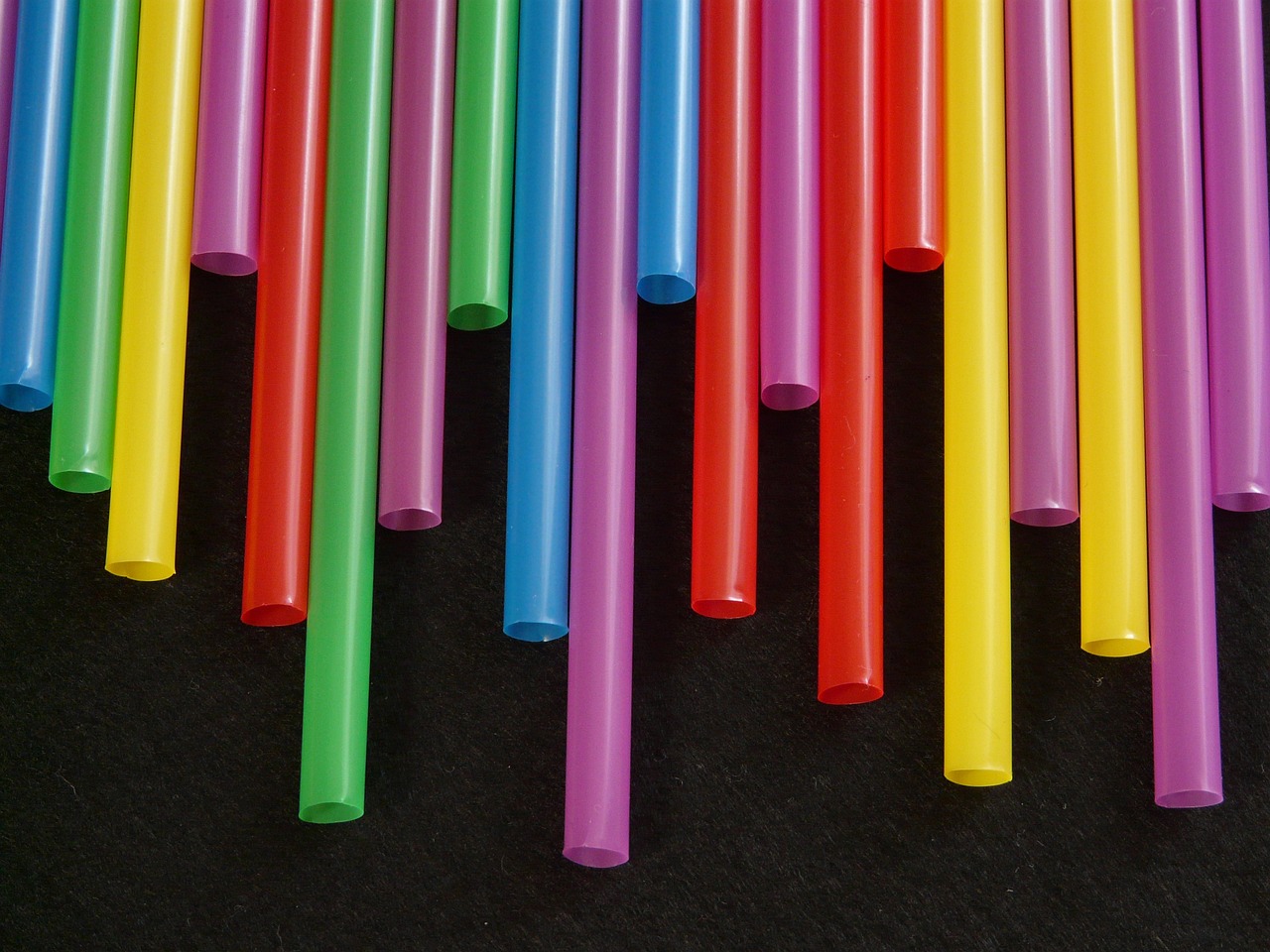
Global Initiatives
The fight against plastic pollution is not just a local issue; it is a global challenge that requires collective action from all corners of the world. Numerous international initiatives have emerged, aiming to unite nations, organizations, and individuals in a concerted effort to tackle this pressing environmental crisis. These initiatives vary in focus, from reducing plastic production and consumption to enhancing recycling efforts and promoting sustainable practices.
One of the most notable global initiatives is the United Nations Environment Programme (UNEP), which has been instrumental in raising awareness about plastic pollution. UNEP has launched campaigns such as the Clean Seas Campaign, which encourages countries to take action against marine plastic litter. This initiative not only emphasizes the need to reduce single-use plastics but also promotes the importance of sustainable waste management practices. Countries participating in this campaign commit to implementing measures that will significantly reduce plastic pollution in their waters.
Another significant effort is the Global Plastic Action Partnership (GPAP), which brings together governments, businesses, and civil society to develop and implement solutions to plastic pollution. This partnership focuses on creating a circular economy for plastics, where materials are reused, recycled, and kept out of landfills and oceans. By fostering collaboration, GPAP aims to create innovative strategies that can be adapted to local contexts while addressing the global nature of plastic waste.
In addition to these initiatives, various countries are signing international agreements to combat plastic pollution. For example, the Basel Convention has been amended to include plastic waste, regulating its international trade and ensuring that countries manage plastic waste responsibly. This move is critical as it helps prevent developed nations from exporting their plastic waste to developing countries, where it often ends up in landfills or the ocean.
Moreover, grassroots movements are gaining momentum globally, with communities organizing clean-up events and awareness campaigns. These local actions complement international efforts by fostering a sense of responsibility and encouraging individuals to make conscious choices about their plastic consumption. As communities engage in these initiatives, they not only contribute to cleaner environments but also inspire others to join the cause.
Ultimately, the success of these global initiatives hinges on collaboration and commitment from all sectors of society. By working together, we can create a world where plastic pollution is significantly reduced, and our oceans and ecosystems can thrive once again. It is a monumental task, but with the right strategies and a united front, we can turn the tide against plastic pollution.
- What are the main goals of global initiatives against plastic pollution?
The main goals include reducing plastic production, enhancing recycling efforts, and promoting sustainable practices worldwide. - How can individuals contribute to these global initiatives?
Individuals can contribute by reducing their plastic use, participating in local clean-up events, and advocating for sustainable policies in their communities. - What role do governments play in combating plastic pollution?
Governments implement policies and regulations that promote waste reduction, recycling, and sustainable materials, which are crucial for driving systemic change.
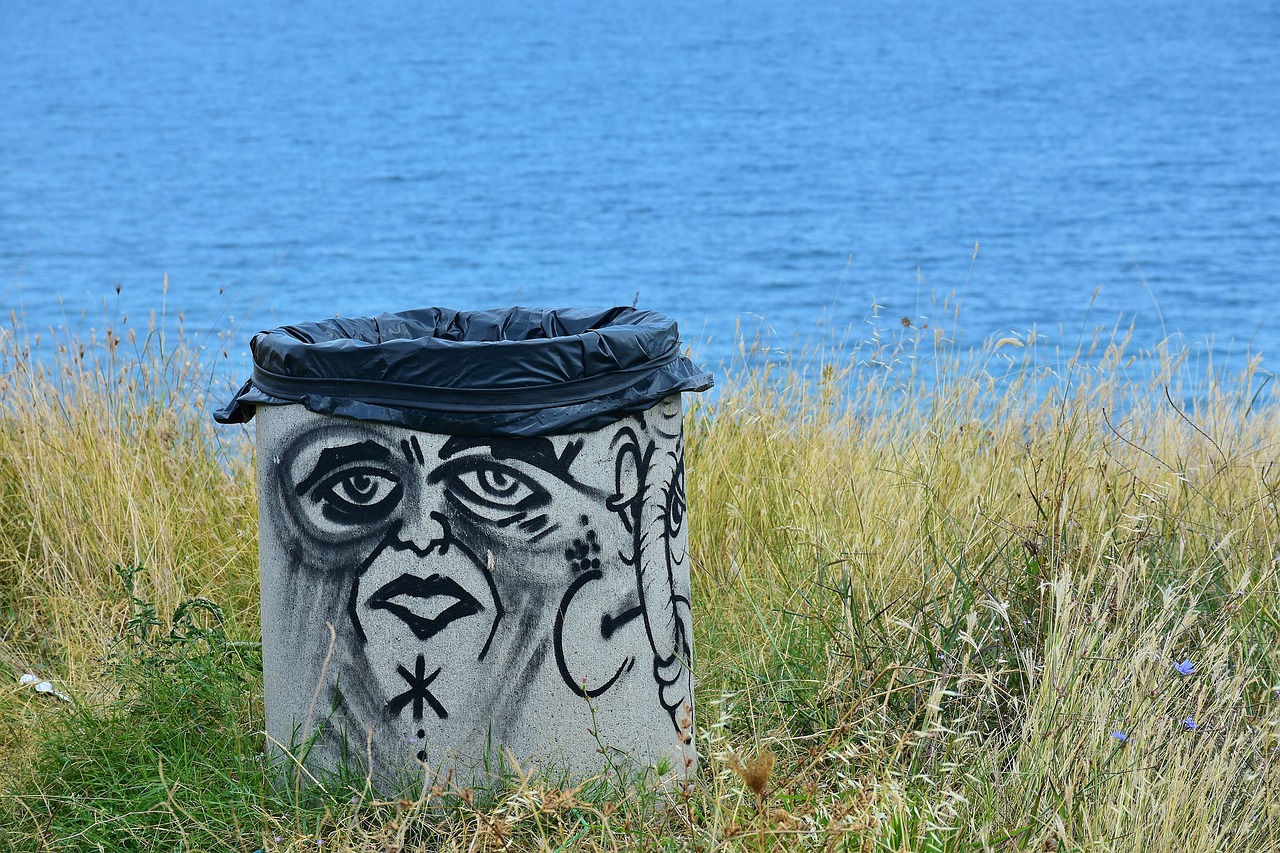
Local Government Actions
Local governments play a pivotal role in the fight against plastic pollution. Their actions can ripple through communities, creating significant impacts on reducing plastic waste. By implementing targeted policies and engaging with citizens, local authorities can foster a culture of sustainability. One of the most effective ways they can do this is by introducing plastic reduction initiatives that encourage residents to rethink their consumption habits.
For instance, many local governments have begun to ban single-use plastics, such as bags and straws, in an effort to cut down on waste. These bans not only limit the availability of harmful plastics but also raise awareness among the public about the environmental consequences of their choices. In addition, local governments can promote the use of reusable alternatives by providing incentives, such as discounts at local businesses for customers who bring their own bags or containers.
Furthermore, local governments can enhance recycling programs by improving access to recycling bins and educating the public on proper recycling practices. This can involve community workshops, informational campaigns, and even school programs that teach children about the importance of recycling. By making recycling more accessible and understandable, communities can significantly increase their recycling rates, thereby diverting more plastic waste from landfills and oceans.
In many cities, local governments are also taking a proactive approach by collaborating with businesses to develop sustainable packaging solutions. This partnership can lead to innovative practices that reduce plastic use at the source. For example, local governments can encourage businesses to switch to biodegradable packaging or to adopt take-back programs where consumers can return used products for proper disposal or recycling.
To illustrate the impact of local government actions, consider the following table that highlights some successful initiatives from various cities:
| City | Action Taken | Impact |
|---|---|---|
| San Francisco | Ban on plastic bags | Reduced plastic bag usage by over 80% |
| Seattle | Mandatory composting and recycling | Increased recycling rates to 60% |
| New York City | Plastic straw ban | Raised awareness about single-use plastics |
In conclusion, local government actions are crucial in tackling the issue of plastic pollution. By implementing policies that promote sustainability, educating the public, and collaborating with businesses, local authorities can create a cleaner, healthier environment for all. The power of community engagement cannot be underestimated; when residents feel empowered to make a difference, the collective impact can be profound. So, the next time you see a local initiative aimed at reducing plastic waste, remember that it’s not just a small step—it’s a giant leap towards a more sustainable future.
- What can I do to help reduce plastic pollution in my community? You can start by reducing your use of single-use plastics, participating in local clean-up events, and supporting local policies aimed at sustainability.
- Are there any alternatives to single-use plastics? Yes, consider using reusable bags, metal straws, and biodegradable containers as alternatives to single-use plastics.
- How can I find out about local recycling programs? Check with your local government’s website or contact your waste management department for information on recycling programs in your area.
Frequently Asked Questions
- What is plastic pollution?
Plastic pollution refers to the accumulation of plastic products in the environment, which poses serious threats to wildlife and ecosystems. It's a pressing global issue that stems from various sources, including single-use plastics and industrial waste.
- What are the main sources of plastic waste?
The primary sources of plastic waste include single-use plastics like bags and straws, packaging waste from consumer goods, and industrial plastic waste generated during manufacturing processes. Identifying these sources is crucial for developing effective reduction strategies.
- How does plastic pollution affect marine life?
Plastic pollution has devastating effects on marine ecosystems. Marine animals often ingest plastic debris or become entangled in it, leading to injury, death, and disruptions in the food chain, which can have far-reaching consequences for the entire ecosystem.
- What are microplastics, and why are they a concern?
Microplastics are tiny plastic particles that have infiltrated our oceans and pose significant risks to marine life and human health. They can enter the food chain and accumulate in the bodies of marine organisms, raising concerns about their long-term effects on both wildlife and humans.
- What innovative solutions are being implemented to combat plastic pollution?
Innovative solutions include advancements in recycling technologies, the development of biodegradable alternatives to conventional plastics, and community initiatives aimed at reducing plastic waste. Collaboration among governments, businesses, and individuals is key to driving meaningful change.
- What role do policies and regulations play in addressing plastic pollution?
Effective policies and regulations are crucial in combating plastic pollution. Governments can implement laws that promote waste reduction, enhance recycling efforts, and encourage the use of sustainable materials, leading to systemic change in how we manage plastic waste.
- Are there global initiatives to tackle plastic pollution?
Yes, there are several global initiatives aimed at addressing plastic pollution collectively. International agreements and campaigns foster collaboration among nations to tackle this environmental challenge and promote sustainable practices worldwide.
- What can local governments do to reduce plastic waste?
Local governments can implement policies that encourage recycling, reduce plastic usage, and promote community awareness. Local actions can significantly impact reducing plastic pollution at the grassroots level, making a difference in communities.


















